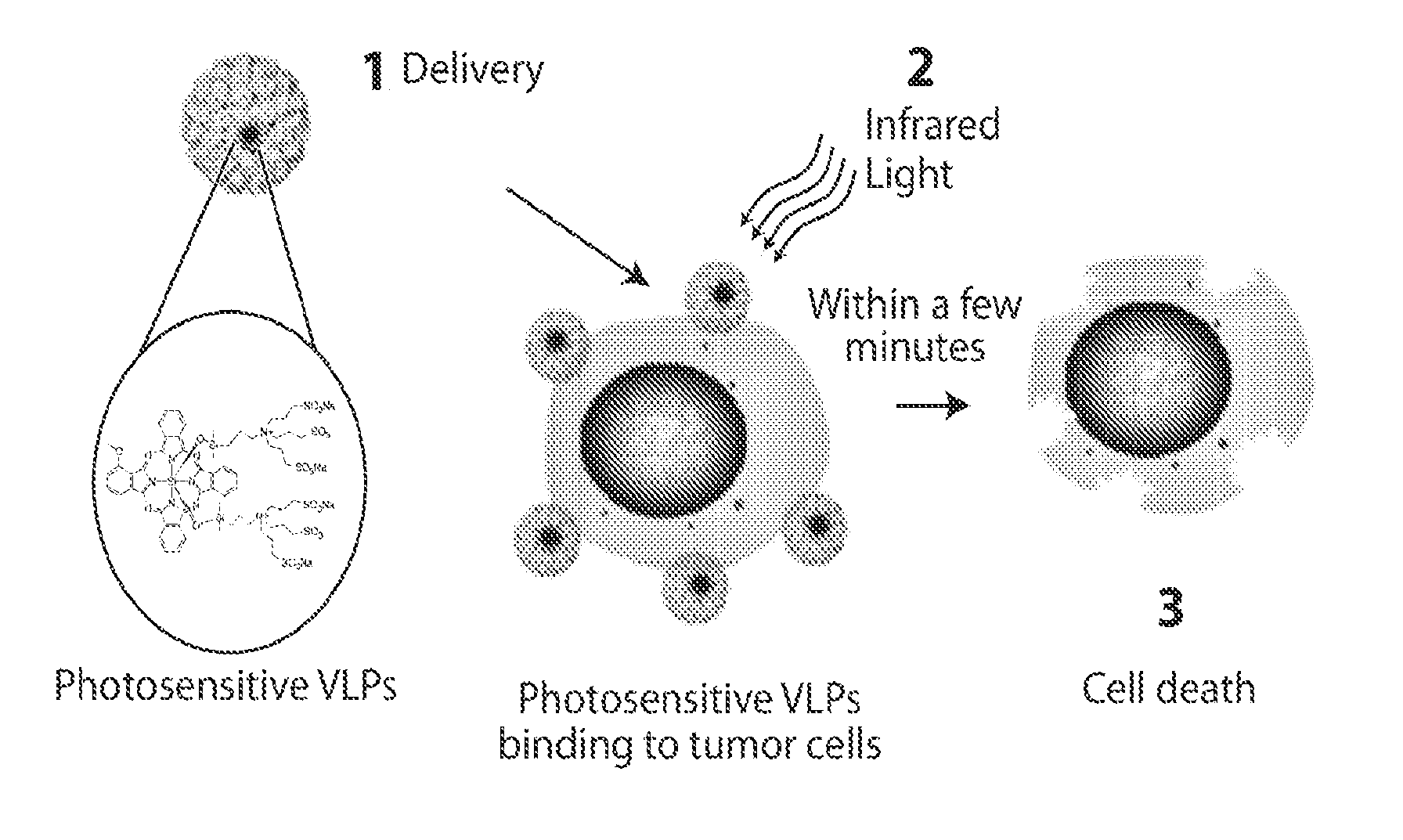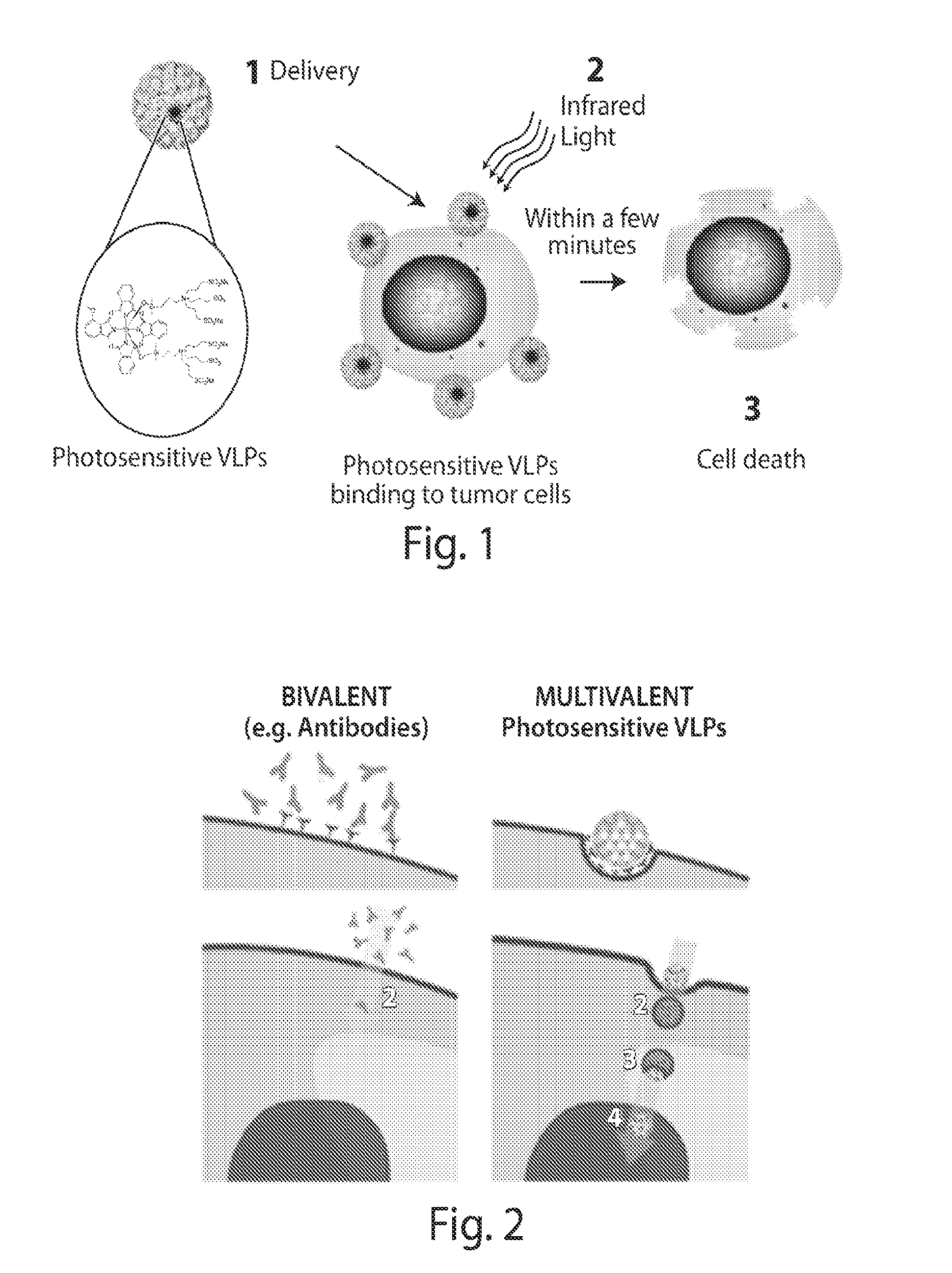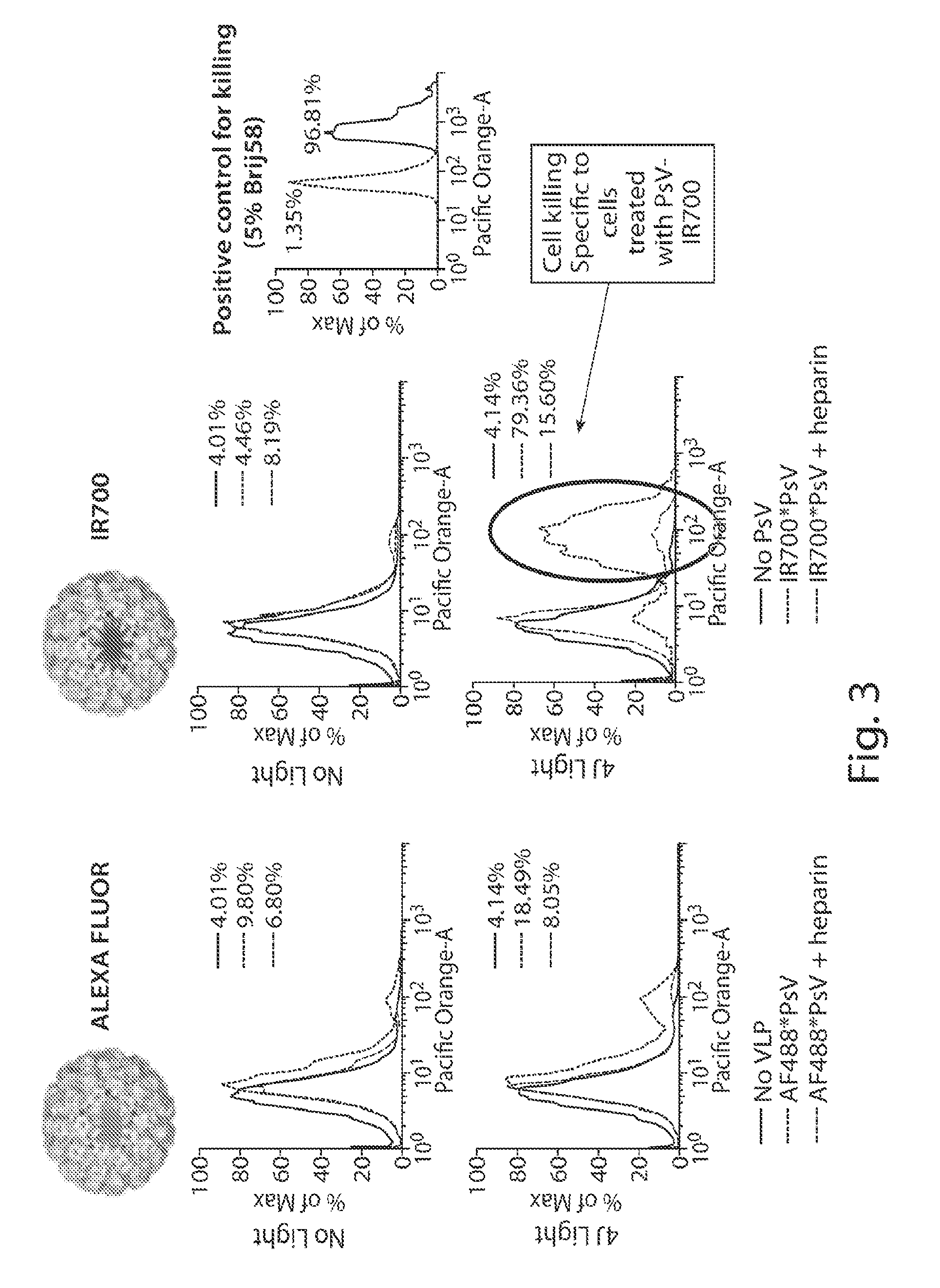Virus-like particle conjugates for diagnosis and treatment of tumors
- Summary
- Abstract
- Description
- Claims
- Application Information
AI Technical Summary
Benefits of technology
Problems solved by technology
Method used
Image
Examples
example 1
Conjugation of IRDye® 700DX
[0104]The procedure of chemical conjugation of VLPs (e.g., viral-like nanoparticles containing a combination of variant HPV16 / 31 L1 proteins and HPV L2 proteins) to a photosensitive molecule (e.g., IRDye® 700DX) is as follows. Typically, solutions of VLPs were maintained at a concentration of 1 mg / ml in PBS, pH=7.2 and 0.3 to 0.5 M NaCl. The IR700 (e.g., IRDye® 700DX) molecules were supplied from the manufacturer as dry NHS (N-Hydroxysuccinimide) esters (NHS-esters react with amine groups on proteins to form covalent amide bonds) (FIG. 10A). Available amine groups on proteins are the amino terminus of the protein or the ε-amino group on the amino acid (e.g., lysine). The dry solid IR700-NHS ester was dissolved in DMSO at a concentration of 5 mg / ml and stored frozen. Typically, different ratios of VLP:dye were achieved by mixing different amounts of IR700-NHS to a fixed amount of VLP, usually 1 ml of 1 mg / ml solution in PBS. The typical ratios and the amoun...
example 2
Conjugation of Visudyne®
[0106]The conjugation of Visudyne® to the VLPs followed a slightly different protocol relative to the IR700-NHS. Visudyne® molecules required functionalization to NHS, prior to conjugation to VLPs. This functionalization was achieved through the use of EDC (1-ethyl-3-(-3-dimethylaminopropyl) carbodiimide hydrochloride). EDC was used to functionalize molecules that have a free carboxylic acid molecule, such as Visudyne® (see FIG. 10B; circled), and in the presence of sulfo-NHS effectively transfer the NHS moiety to this agent. This reaction scheme is outlined in FIG. 11. Briefly, approximately 2 mM of EDC and a 2× molar excess of sulfo-NHS was reacted with varying amounts of Visudyne®. After 15 minutes at room temperature, the reactions were stopped with the addition of 2-mercaptoethanol to a final concentration of 20 mM. This reaction mixture was added to 1 mg of VLPs at a concentration of 1 mg / ml in PBS, pH=7.2+0.3-0.5 M NaCl and incubated for 2-4 hours at r...
example 3
VLP Binding Specificity is Mediated by HSPG and Inhibited by Heparin
[0107]SK-OV-3 cells in suspension were treated under the following conditions: no VLP (e.g., viral-like nanoparticles containing a combination of variant HPV16 / 31 L1 proteins and HPV L2 proteins), VLP conjugated to either Alexa Fluor® 488 (FIG. 3, “AF488*PsV”) or IR700 (FIG. 3, “IR700*PsV”), or the same VLP conjugates incubated in the presence of HSPG. Following incubation, these cultures were subjected to 4 joules of 690 mm near infrared light. A parallel set of non-light irradiated cells acted as a control. Following irradiation, the cultures were assessed for the extent of cell death. FIG. 3 shows that the only condition under which there was substantial cell killing was cell exposure to IR700*PsV and 4 joules of light. Similar cell death was not observed with exposure to AF488*PsV, revealing that cell death is specific to the IR700 dye conjugates. Moreover, cell death is almost completely abrogated in the presen...
PUM
| Property | Measurement | Unit |
|---|---|---|
| Time | aaaaa | aaaaa |
| Time | aaaaa | aaaaa |
| Energy | aaaaa | aaaaa |
Abstract
Description
Claims
Application Information
 Login to View More
Login to View More - R&D
- Intellectual Property
- Life Sciences
- Materials
- Tech Scout
- Unparalleled Data Quality
- Higher Quality Content
- 60% Fewer Hallucinations
Browse by: Latest US Patents, China's latest patents, Technical Efficacy Thesaurus, Application Domain, Technology Topic, Popular Technical Reports.
© 2025 PatSnap. All rights reserved.Legal|Privacy policy|Modern Slavery Act Transparency Statement|Sitemap|About US| Contact US: help@patsnap.com



